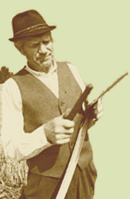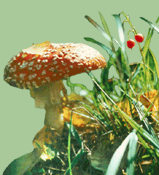The shores of Kiipsaare and the lighthouse
Kaarel Orviku and Hannes Tõnisson describe the influence of sea on the Pisa tower of the Harilaid Peninsula on the Island of Saaremaa: 50 years ago the lighthouse (built in 1933) was located 100 m away from the shoreline, in the middle of the peninsula. By the beginning of 1990ies, the lighthouse was already located on the shoreline, with waves eating its base. The article gives an overview of the development of the Harilaid Peninsula and the changes in seashore. The shape of the peninsula has changed significantly during the past century. As the land was washed away and the lighthouse became surrounded by sea, it sank askew by 9 degrees. As a result of breaking waves and the subsequent turbulence and erosion, as well as the effect of strong winds, the lighthouse went up straight again in 2008. The future processes in the area can not be modeled or predicted.
The evaluation of the location of the nuclear power station
Hella Kink considers the possible locations for the Estonian nuclear power station from the point of view of a geologist would any of these stand any critique? Last year Eesti Energia selected 6 possible locations for the power plant. The selected locations are situated in North- and North-West Estonia, in the former military areas with previous environmental damage. The author describes all 6 locations and draws attention to the numerous protected areas and settlements that would remain in the spheres of influence of the plant.
A good child with many names
Sven Začek gets involved in the life of Black Woodpecker: the big bird hews large cavities into trees, and these can be used by many wild animals. Every year the male woodpeckers cut new holes. The author and his camera have witnessed the family life of black woodpeckers inhabiting a large black alder tree.
Estonian Nature enquires
Ülo Langel and Margus Pooga explain the essence of intercellular targets
Peeter Vassiljev clarifies the concept of landscape theatre
Protected area: the forests, bogs and lakes of Parika
Meelis Suurkask introduces a nature protection area located in the rural municipalities of Suure-Jaani and Kõo, in the Viljandi County, that is characterized by quagmires, bogs and natural forest, and called the Parika nature protection area. The 2222 ha encompass different valuable habitats, but also the nesting sites of the Black Stork and the Lesser Spotted Eagle, as well as feeding grounds of the White-tailed Eagle and the Golden Eagle. Parika features mostly wet habitats, including Lake Parika, a quickly overgrowing mire lake.
Culinary spruce shoots
Urmas Kokassaar recommends adding young spruce shoots to your diet, especially in the conditions of the economic crisis. In addition to a multitude of compounds that are good for your health, the syrup of spruce shoots is a good medicine in case of coughs and throat pain.
Emperor Dragonflies are conquering Estonia
Mati Martin takes a look at the immigration of the new outstanding insects from the south: the climate warming is perhaps a decisive factor behind their spread. The Emperor Dragonfly (Blue Dragonfly) seems to be now quite abundant in Estonia (first spotted in 1989), and last year the author spotted another species of the Emperor genus: the Lesser Emperor. The article draws attention to the differences between large dragonfly species and elaborates on naming the new species.
Interview: The prevention of drugs has to be made easy
Juhan Javoi has interviewed Jaanus Harro, a psychofarmacologist.
Alien species break natures balance
Kaido Krass warns against letting rainbow trouts to nature: we already have the domestic sea trout, which needs to be pampered. Although the rainbow trouts do not multiply in Estonian conditions, they are still one of the reasons for the loss of sea trouts in our rivers, since the two species compete for food and space in rivers. The article looks at the population dynamics of both species in the Järva County, Central Estonia.
The age of the Arbi pine according to dendrochronological research
Alar Läänelaid and Heldur Sander look for the answer to an old question: how old is the symbol of Elva? Last years dendrochronological research indicated that the majestic pine tree started to grow in about the end of 1650ies, making it about 350 years old. The tree is still in good health and continues to grow. The girth of the pine tree is 390 cm at the height of 50 cm.
|


![[IN ENGLISH]](images/gb.gif)





